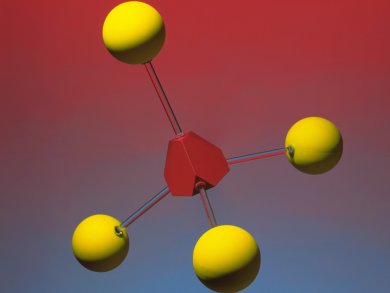The high steric repulsion between substituents on the carbon center makes the generation of quarternary centers challenging. Varinder Aggarwal and co-workers, University of Bristol, UK, have shown that tertiary boronic esters can be used to create quaternary stereogenic centers enantioselectively. They used Matteson homologation conditions, with bromomethyl lithium replacing LiCH2Cl, to convert the teriary boronic ester into a quaternary center bearing an α-primary alcohol.
A range of substrates could be prepared this way, all with a good enantiomeric ratio. The inclusion of a vinyl group could be performed by a Zweifel-type olefination of the boronic esters with vinylmagnesium bromide. This methodology was applied to the synthesis of the natural product (+)-sporochnol and the serotonin antagonist (S)-1,2-diphenyl-4-[4-(2-methoxyphenyl)-1-piperazinyl]-2-methyl-1-butanone.

Images: (c) Wiley-VCH
- Enantioselective Construction of Quaternary Stereogenic Centers from Tertiary Boronic Esters: Methodology and Applications
R. P. Sonawane, V. Jheengut, C. Rabalakos, R. Larouche-Gauthier, H. K. Scott, V. K. Aggarwal,
Angew. Chem. Int. Ed. 2011.
DOI: 10.1002/anie.201008067




